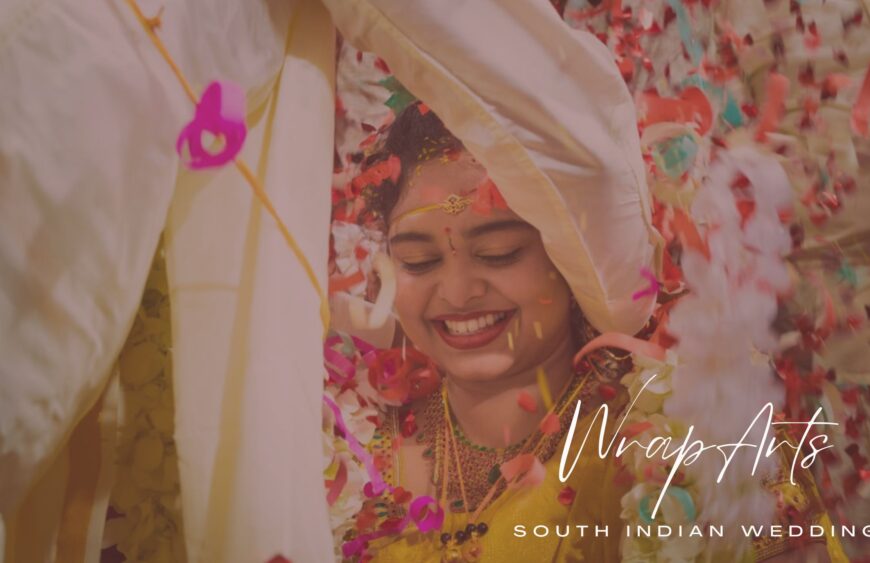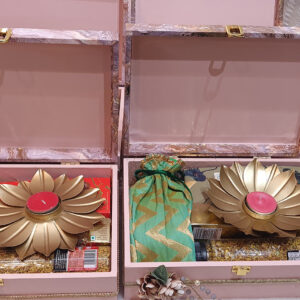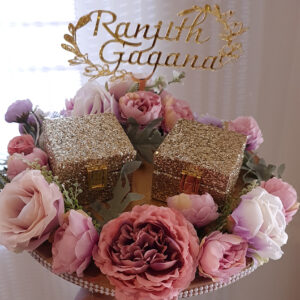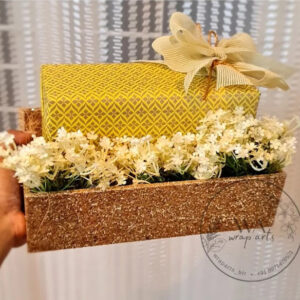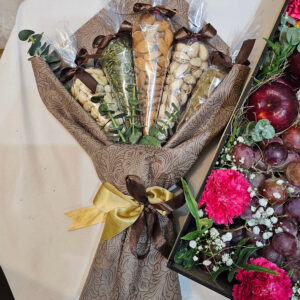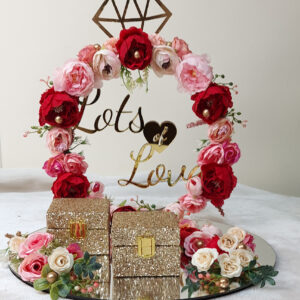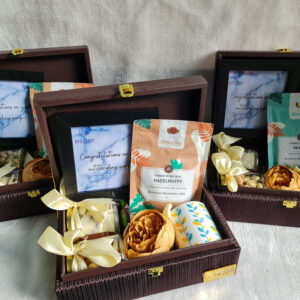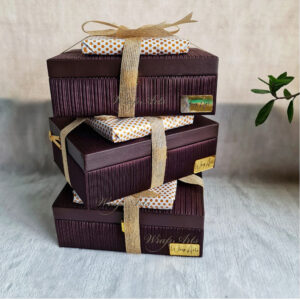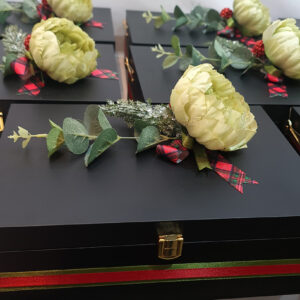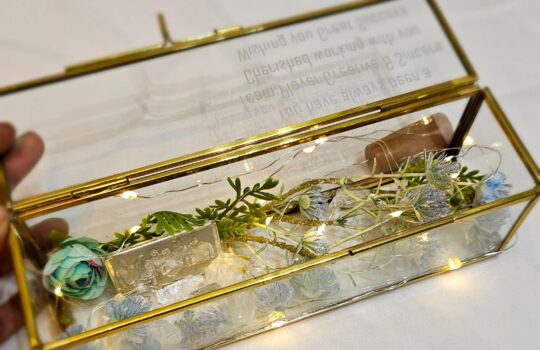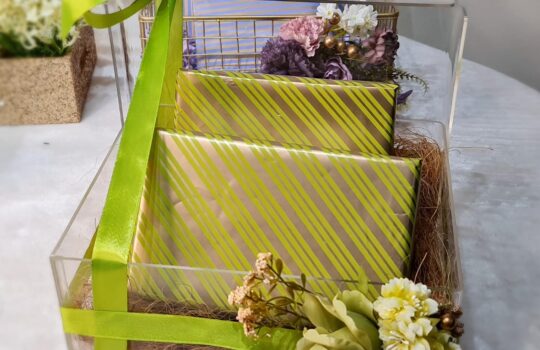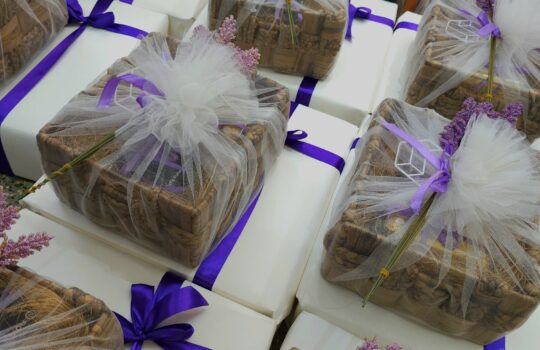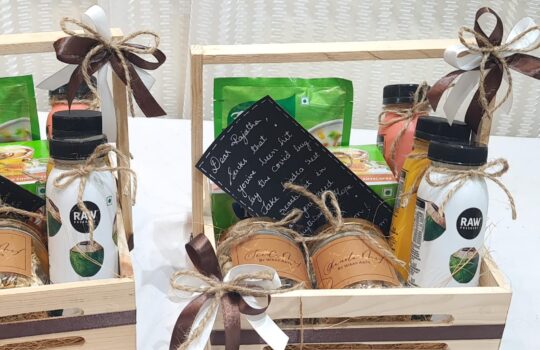Kashi Yatra
According to the Vedas, the ancient Hindu scriptures, a man’s life is divided into four stages: Brahmacharya (Bachelor period), Grihastha (Householder period), Vanaprastha (Retirement period), and Sanyasa (Renunciation period).
Kashi Yatra, the Brahmin wedding ritual, marks the phase of a man transitioning from a Bachelor’s life to the life of a Householder. In this tradition, the groom claims to leave all his worldly pleasures and embark on a spiritual journey to the Himalayas (Kashi), and the bride’s father intervenes and persuades him to reconsider his decision. This is one of the first rituals performed on the day of the wedding, and a great ice-breaker as all the family members participate in this dramatic ordeal.
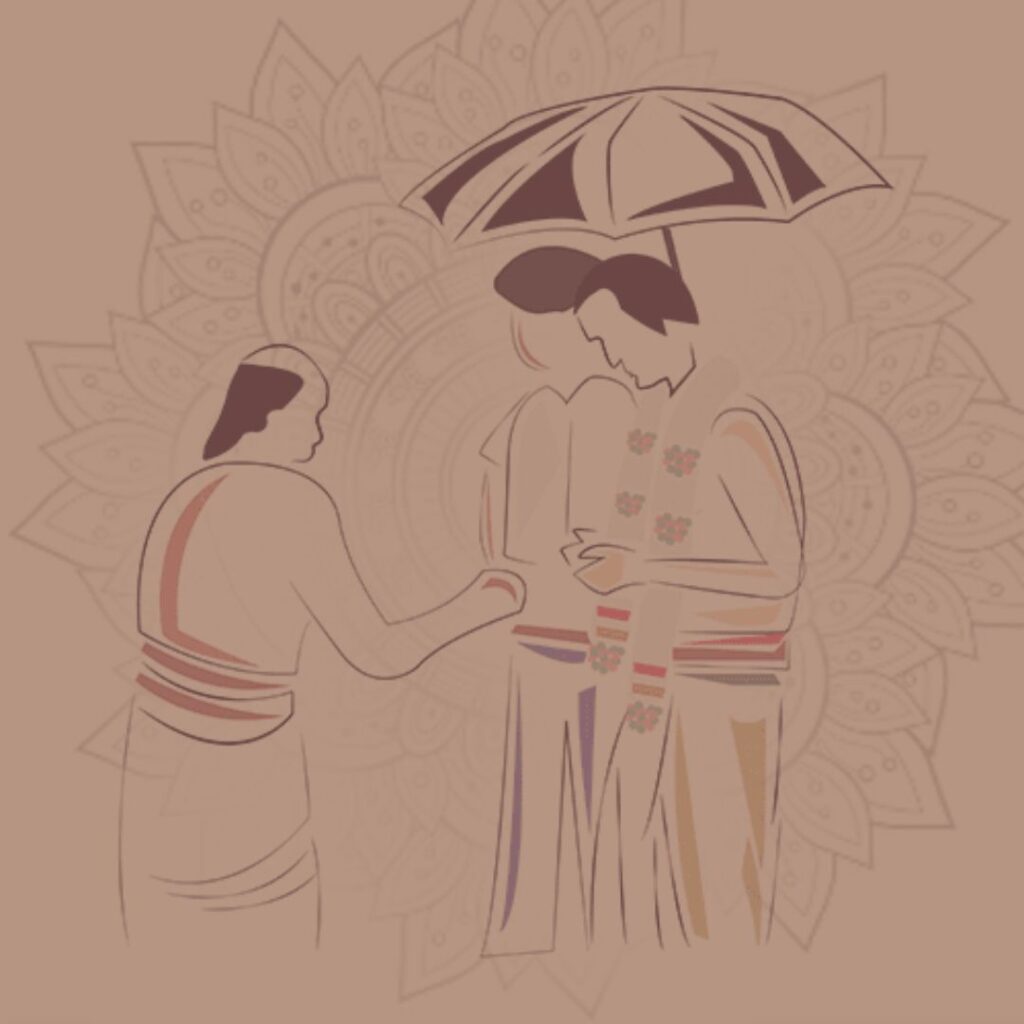
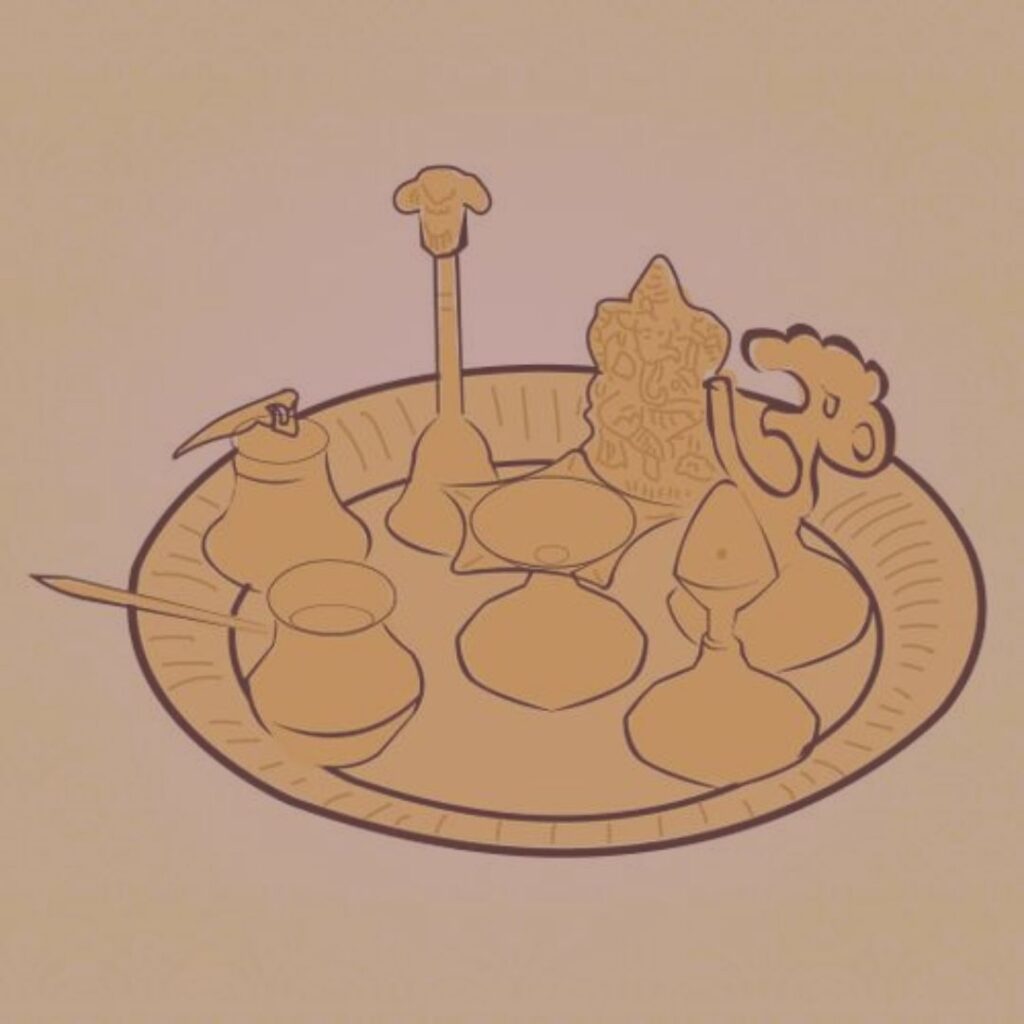
GANESHA POOJA
Ganesha Pooja is the first thing that takes place in the mandap. The groom has to take part in the same. This pooja is performed so that the wedding goes well without any hindrances as well as for a happy and prosperous married life. The bride performs the Gauri puja, seeking her blessings. Her maternal uncle then brings her to the stage. In some communities, she is seated in a straw basket and carried onto the mandapam.
GAURI POOJA
Goddess Gowri is the most powerful mother of the universe, and she symbolises purity, motherhood, fertility, and goodness. Gowri Pooja is performed by the bride on the wedding day to seek the blessings of Goddess Gowri for a happy married life. Goddess Gowri is the wife of Lord Shiva and she epitomises love, beauty, fertility, marriage, children, devotion, power and divine strength. The bride takes inspiration from Goddess Gowri and prays for similar strength and divine love in her life, free of obstacles. The bride offers prayers to Goddess Gowri during the Gowri Pooja aarti and seeks her blessings for a peaceful, prosperous and long married life.
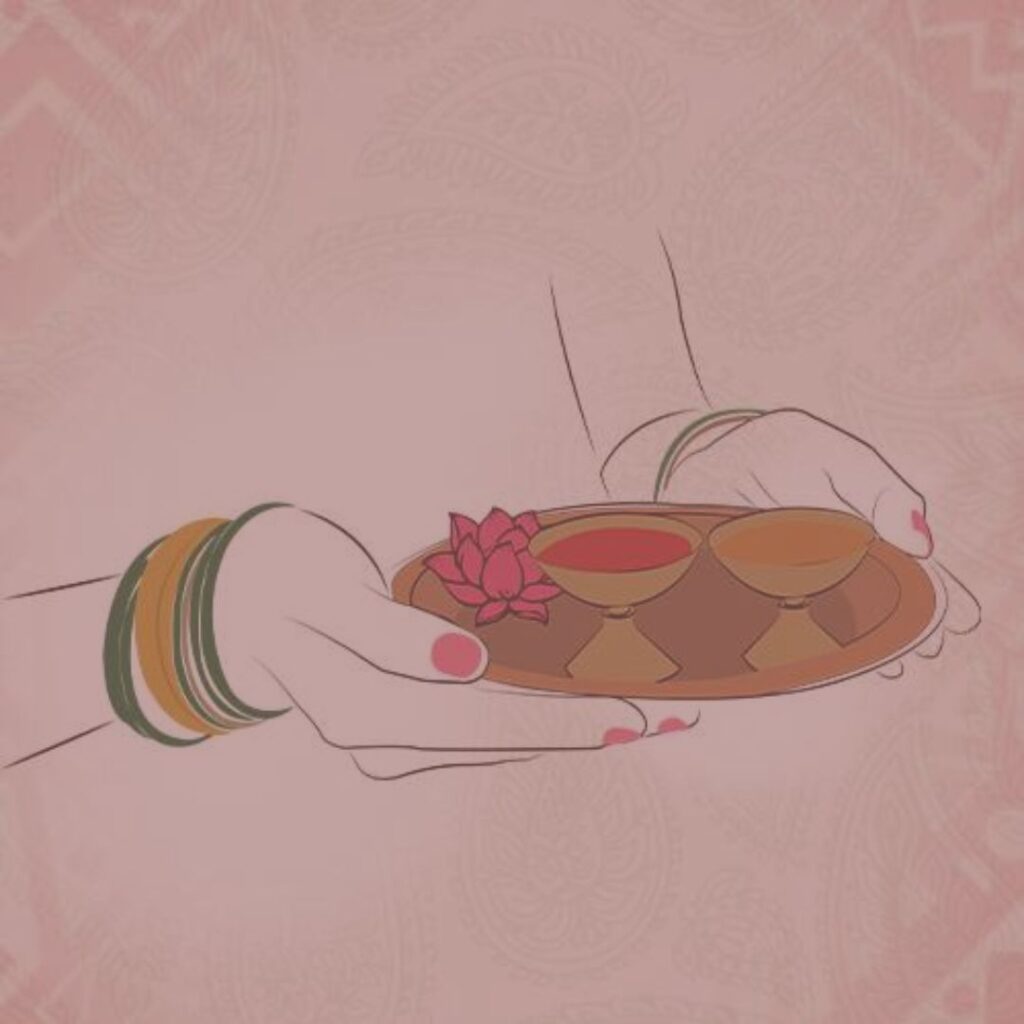
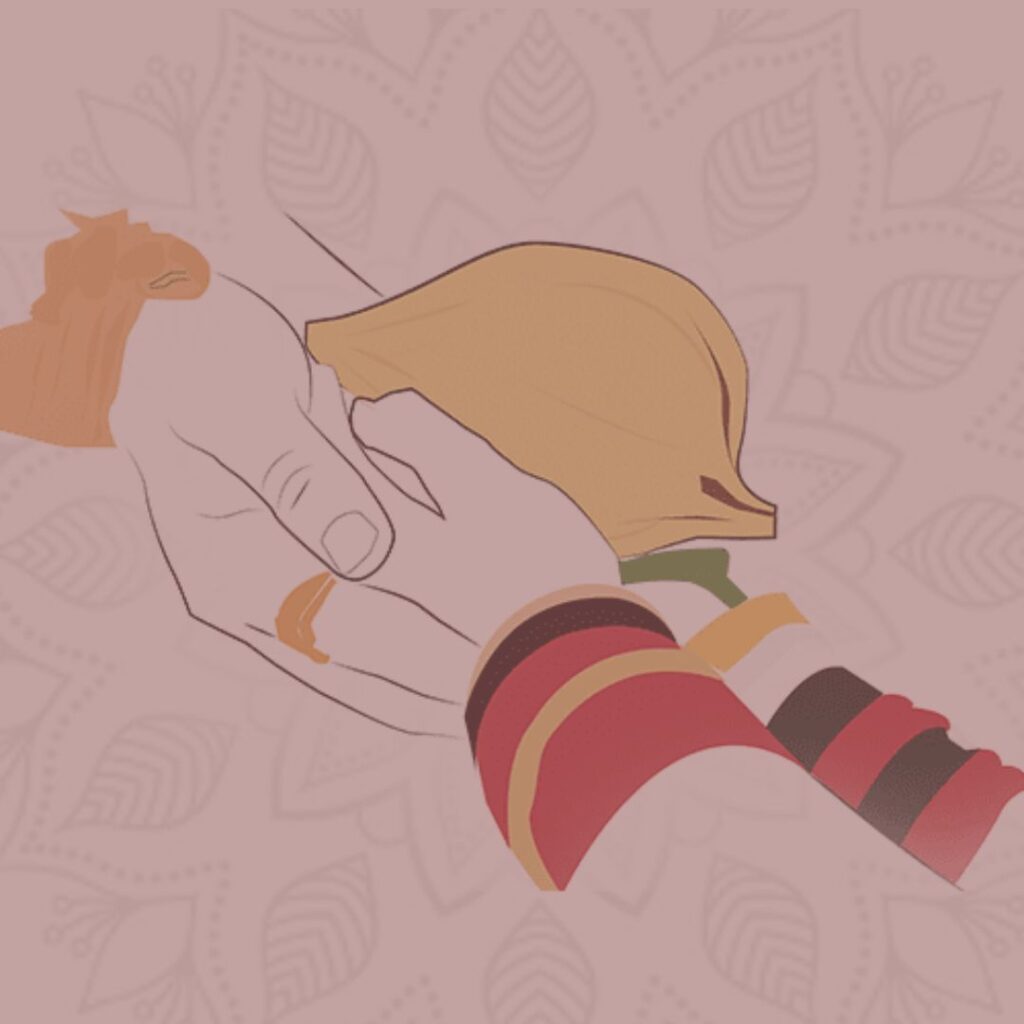
KANYADANAM AND PANIGRAHANAM
The ceremony known as kanyadanam is where the bride’s parents formally send their daughter to the groom. The bride’s parents wash the groom’s feet while they are still separated by the terasala. This rite serves as a symbol. The bride is a representation of the Goddess Laxmi, and the groom is Lord Vishu, who will shortly wed her.
JELLAKARA-BELLAM
This is a major Hindu Telugu wedding event. The words “Jeelakara” and “Bellam” both refer to cumin. Giving the couple’s hands a paste made of cumin and jaggery to start the procedure. The pair applies this paste to each other’s heads during an auspicious period, or Sumuhurtham, while raising their hands above the curtain. The moment the curtain between them is drawn is the moment the pair becomes legally married.
This ritual’s significance lies in the promise that the participants will be as inseparable in body, mind, and soul as pounded cumin and jaggery. The bride and groom are covered in akshintalu (turmeric rice), which is sprinkled by elders and other family members and guests.
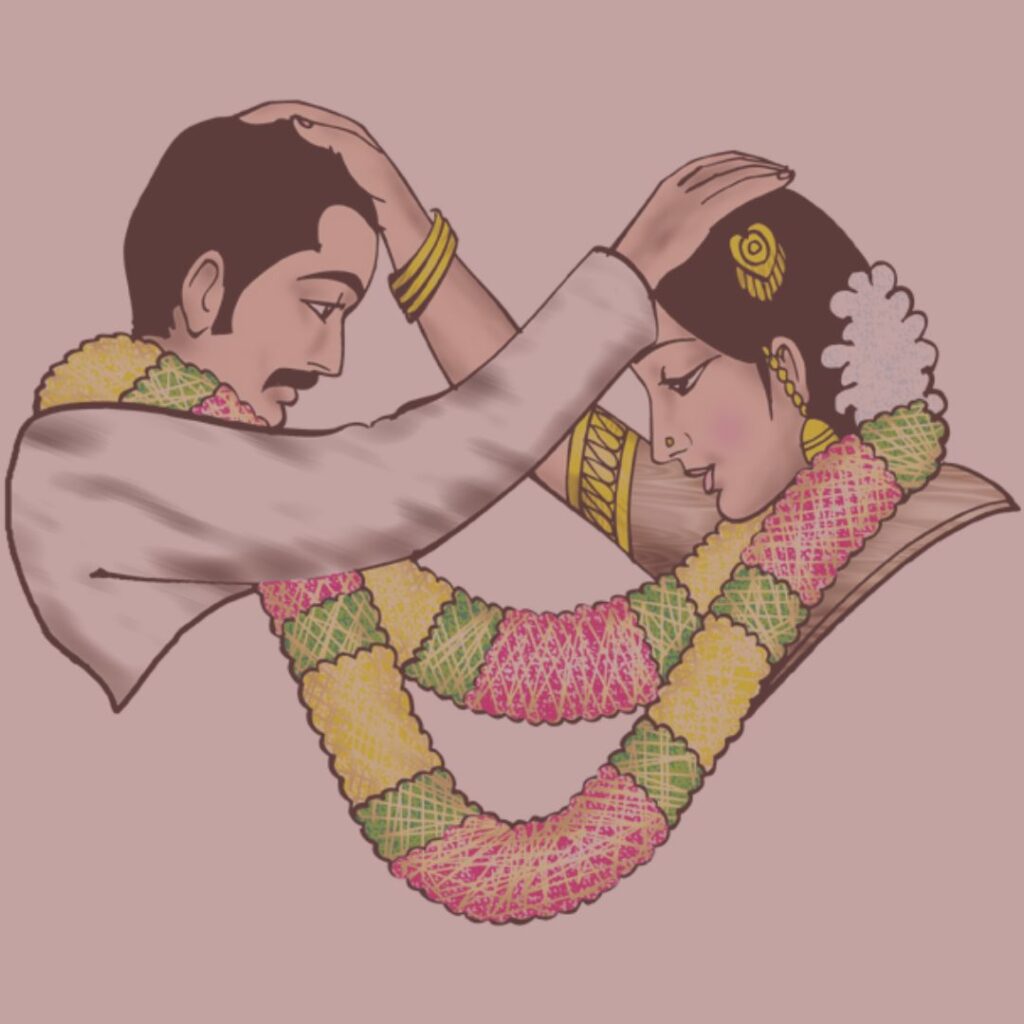
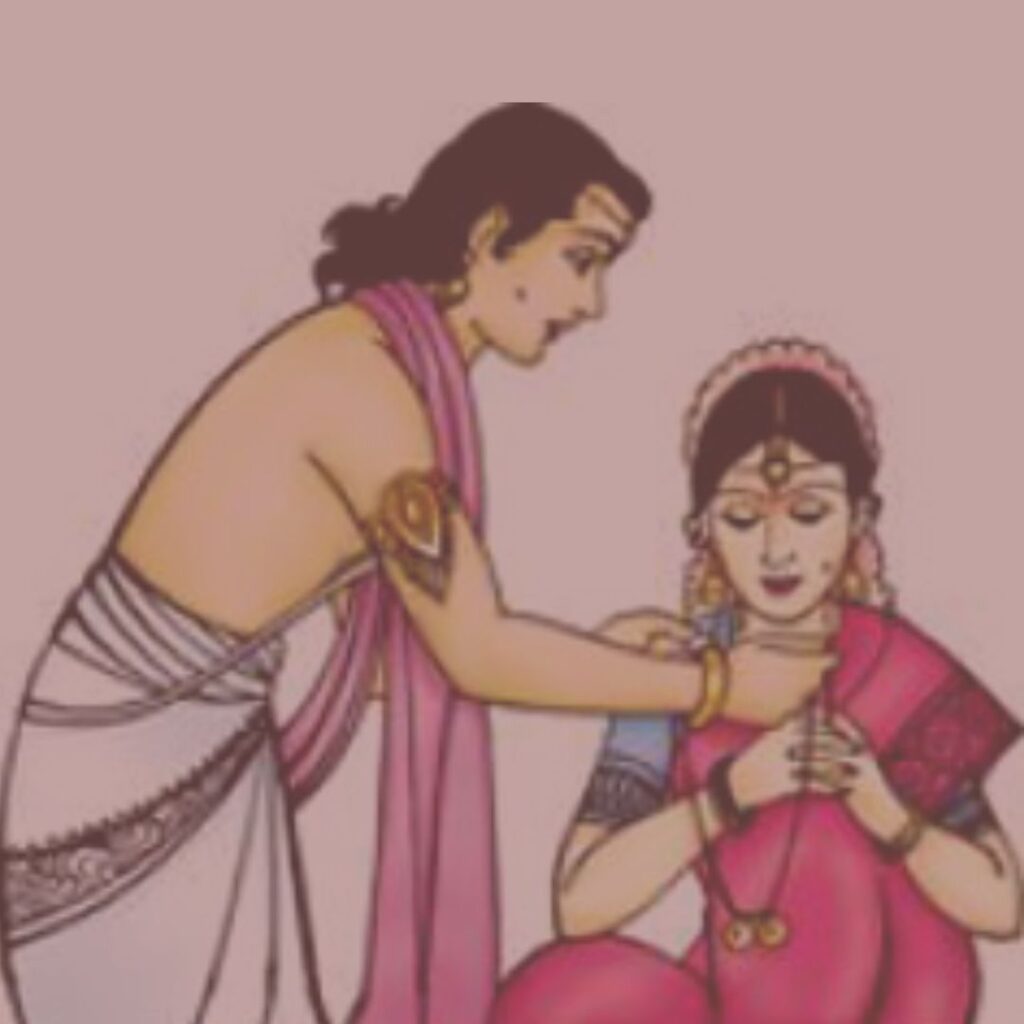
MANGALSUTRAM
Hindu marriages place a great deal of significance on the mangalsutra. A holy yellow thread called a mangalsutra is covered in turmeric. Two gold “Sutralu” pendants that are knotted by the groom in three knots around the bride’s neck when he performs the “sannai mellam” are attached.
Each of the three knots—one for Manasa (thoughts), Vacha (speech), and Karmana (action)—is tied by the groom. This specific rite also denotes the physical, mental, and spiritual union of the two souls. On the sixteenth day following the wedding, the yellow thread is switched out for a gold chain.
PRADHANAM
Another icebreaker, not just for the couple but also for the family, is provided by this. A gold ring is thrown into a kettle of turmeric water for this game. To locate the ring, the bride and groom extended their right arms. The winner is the first person to find the ring twice out of three.
One gold and one silver ring can be added to the game to add intrigue, and the winner is the player who discovers the gold ring twice. The game shows who will have the upper hand in the marriage—the bride or the groom—and promotes healthy competitiveness.
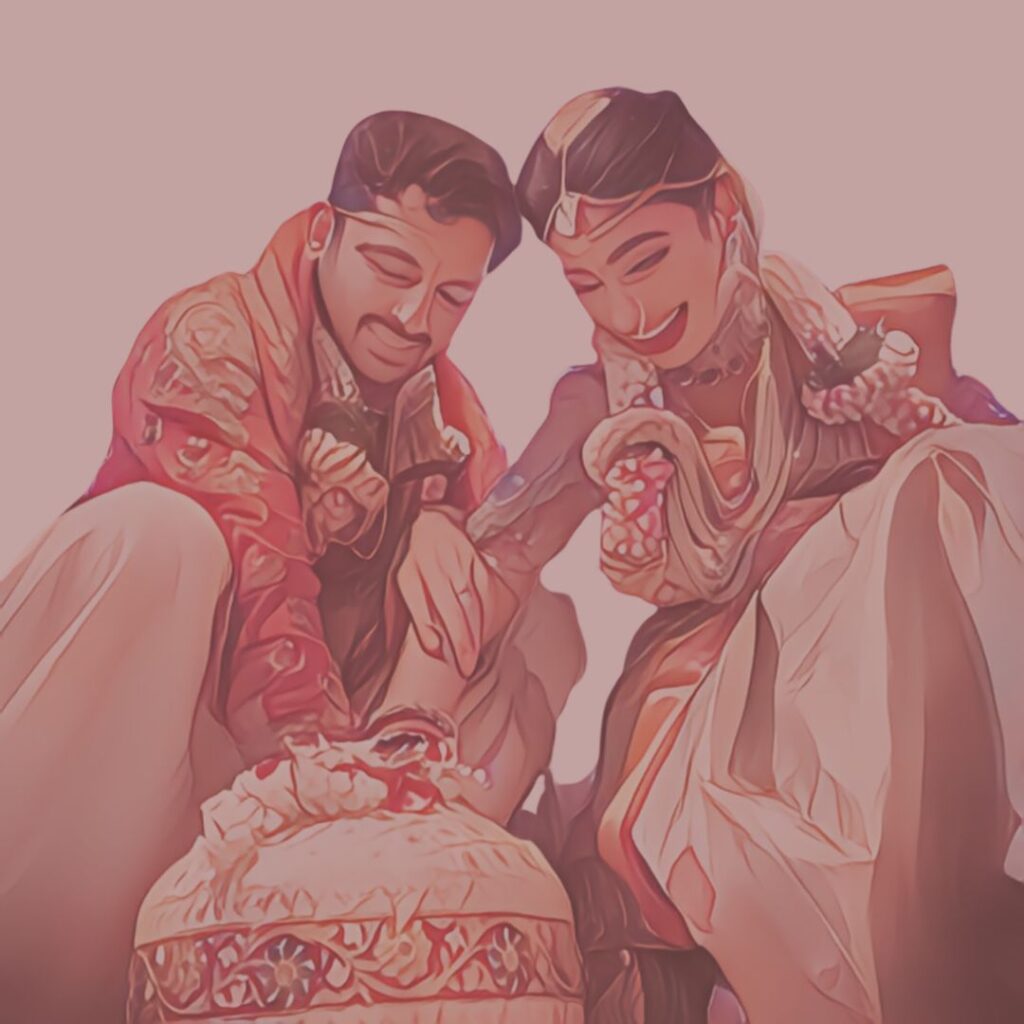
Recommended Products
Diwali trunk
Names in Garden
Red oval plate
Chariot Ring platter
Christmas chocolate
Retirement
Dry nuts bouquet
Lots of Love
Employee appreciation
Christmas green
Related Articles
Recent Posts
- Why Personalized Corporate Gifts Are the Best Investment
- The Art of Corporate Return Gifts: How to Make Your Event Memorable
- Custom Corporate Gift Baskets: Tailoring Your Gifts for Maximum Impact
- Five Unique Corporate Hampers That Make a Lasting Impression
- The Art of Bespoke Gifting: Transforming a Naming Ceremony with 350 Personalized Hampers

